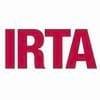Explore all the information on
Minerals in poultry nutrition
Minerals in poultry nutrition are typically classified as macro- or micro-minerals, depending on the levels needed in the diet. The macro-minerals include calcium, phosphorus, chlorine, magnesium, potassium, and sodium. Requirements for the macro-minerals are typically expressed as a percentage of the diet, while the requirements for the micro-minerals are stated as parts per million. Although the quantities required for micro-minerals are lower than for macro-minerals, they play an essential role in the body's metabolism. The micro-minerals include copper, iodine, iron, manganese, selenium, and zinc.
The liver is the largest gland of the body and an accessory organ of the poultry digestive system. The liver involves in a wide range of functions including the fat mobilization and metabolism of carbohydrates, proteins, fats, vitamins and...
Comments : 18
Recommendations: 14
1. Introduction Among agricultural industries, the poultry industry is prominent in many countries, since it supplies the majority of human protein[1]. Providing humans with energy, protein, and essential micronutrients, poultry contributes substantially to food security and nutrition globally. In addition to having short production cycles, poultry can convert a wide variety of agricultural byproducts and wastes into meat and eggs that are edible to humans [2]. Increasing...
Comments : 0
Recommendations: 0
Introduction Animal husbandry, the agricultural practice of breeding and raising livestock, is a major food-producing industry worldwide. The increasing global demand for animal protein results in rapidly growing animal production as well as the growth of animal feed and the feed additive market. The feed additives have played a significant role in the sustainability of the livestock industry. There are four major drivers for the growth of the animal feed additive market including:...
Comments : 0
Recommendations: 0
Introduction Animal production faces serious challenges, having to feed a growing population while dealing with increased competition for land, climate change and having to take a more sustainable approach. Sustainable agriculture requires us to meet society’s present needs without compromising the ability for current, or future generations, to meet their needs. The effectiveness by which an animal is capable to transform feed biomass into animal products determines the amount...
Comments : 0
Recommendations: 0


Effective Solutions for Preventing and Treating CRD in Poultry with Natural and Conventional Approaches
Suggested link
I. INTRODUCTION Dietary electrolyte balance (DEB) is defined by the interrelationship between sodium (Na + ), potassium (K + ) and chloride (Cl - ) where DEB = Na ++ K + -Cl - as mEq/kg and it plays an influential role in homeostasis of the body fluids. Borges et al. (2004) investigated DEB in two experiments and concluded that there was a quadratic effect on weight gain and feed conversion efficiency (FCE) when the DEB was...
Comments : 7
Recommendations: 5
Craig Coufal (Jones-Hamilton) shares research on the benefits of sodium bisulfate in performance and gut health, in this Engormix interview during IPPE 2025 in Atlanta, USA
...
Comments : 0
Recommendations: 1
Introduction: Due to the constant genetic evolution in both the production of broilers, nutritionists must constantly adapt their nutritional recommendations and feeding programs to maximize economic results at all times. These management and nutrition decisions must take into account: the animal (potential for growth), environmental conditions and the composition of the feed, which affect feed consumption and, consequently, the performance of birds. And economic...
Comments : 13
Recommendations: 11
Raquel Burin (Zinpro) discusses the correlation between eggshell translucency and performance parameters, in this Engormix interview during IPPE 2025 in Atlanta, USA....
Comments : 0
Recommendations: 1


How Does Coccidiosis Affect Poultry Farming, and What Strategies Can Mitigate Its Impact?
Suggested link
Mohamad Mortada (ADM Animal Nutrition) shares the results of his research on zinc bioavailability, impact on growth and bone mineralization in this Engormix interview during IPPE 2025 in Atlanta, USA.
...
Comments : 0
Recommendations: 2
Author details: 1 IRTA, Animal Nutrition, Mas Bové, 43120 Constantí, Catalonia, Spain; 2 IRTA, Animal Health, Centre de Recerca en Sanitat Animal (CReSA), Campus de la Universitat Autónoma de Barcelona (UAB), 08193 Bellaterra, Catalonia, Spain; 3 IRTA, Animal Welfare, Finca Camps i Armet, 17121 Monells, Catalonia, Spain; 4 IRTA, Animal Breeding and Genetics, Torre Marimon, 08140 Caldes de Montbui, Catalonia, Spain. 1....
Comments : 0
Recommendations: 2
Dr. S. Sridhar, Product Manager at Optima Poultry Private Limited, leads the way in introducing advanced organic trace minerals to India’s poultry market. Offering a unique combination of organic and inorganic trace minerals, Optima’s products enhance bioavailability and improve gut absorption, promoting better poultry health and growth. ...
Comments : 0
Recommendations: 0
"Trace minerals are nutritional elements added to production and companion animal diets in tiny quantities. They are essential for structural, physiological, catalytic, and regulatory functions in animals, making their inclusion in diets crucial for various reasons. Natural diets may not provide sufficient amounts of specific minerals to meet animal needs, the minerals in the feed may not be in a form that is easily absorbed, or anti-nutritional factors might decrease the proportion of...
Comments : 0
Recommendations: 1


Will New Version of GMP Boost the Veterinary Drugs Industry?
Suggested link
Copper (Cu) is a vital element involved in cellular metabolism and enzyme systems. At levels greater than nutritional requirements, dietary Cu addition enhances growth performance as a growth promoter (Pesti and Bakalii, 1996). Copper dosing at levels up to 250 mg/kg feed has been shown to improve intestinal structure and function, and alter the intestinal microbiota profile (Di Giancamillo et al., 2018). However, a high level of copper in the sulphate form (CuSO 4 ) which is...
Comments : 18
Recommendations: 7
Impact of Trace Mineral Status on Biological Function: The nutritional status of animals is an indicator of their productivity and reproductive capabilities. In tropical countries like India, mineral imbalances or deficiencies are prevalent . (Mc Dowell et a l., 1993) . Livestock in India typically rely on grazing and receive minimal or no mineral supplementation, apart from common salt. (Garg et al ., 2005) . Additionally, the mineral content of locally...
Comments : 0
Recommendations: 0
Marked deficiencies are unlikely to occur in modern commercial production systems; however, marginal deficiencies could arise under certain conditions such as poor feed formulation or low feed intake. The occurrence and severity of mineral deficiencies are influenced by the duration of time that deficient diets are fed, prior mineral status, and the physiological state of the animals (Hill,2000). ...
Comments : 0
Recommendations: 0
LIPTOSA's Commitment to Africa: Expanding Horizons at VIV Africa 2024 Last month, LIPTOSA made a strong statement of its commitment to the African market by participating once again in VIV Africa 2024, the leading trade show for animal production professionals in Sub-Saharan Africa. The event took place from October...
Comments : 0
Recommendations: 1
Chel means CLAW in Greek. The Mineral needs a support to CLAW itself. This support is provided by Amino Acids and this organic support is called LIGAND in chemistry. Amino Acids have a very low molecular weight and can be absorbed easily through the walls of the intestine and hence are most preferred ligands for chelation. ...
Comments : 4
Recommendations: 2
Good Evening I have a question regarding using the phytase matrix value in the least cost formulation software. Should I enter the Calcium value, or should I leave it Zero? Dealing with the calcium figure is not like the others, because we don't have Total calcium, and available calcium in the formulation, we have only calcium which will assume that it is 100% available. for the energy, we have Total energy and ME, for phosphorus we have the total and the available, Amino acids we have total...
Comments : 56
Recommendations: 9
https://www.youtube.com/live/zrOZbXMrY_Y?si=N-rQ4GhN6t0-CzlL ...
Comments : 0
Recommendations: 0
Rick Kleyn (Consultant at Spesfeed) comments on levels of protein, energy, and phosphorus when formulating poultry diets, in this Engormix interview....
Comments : 1
Recommendations: 0













.jpg&w=3840&q=75)














